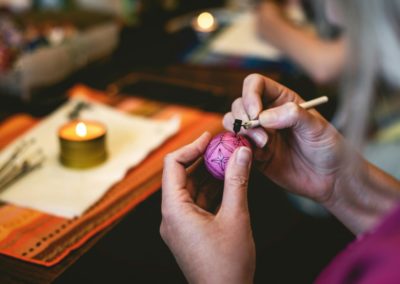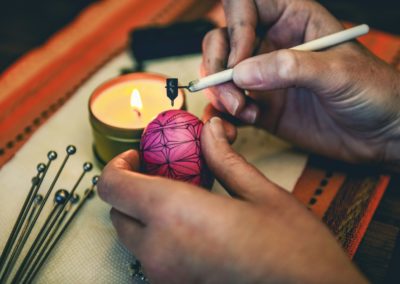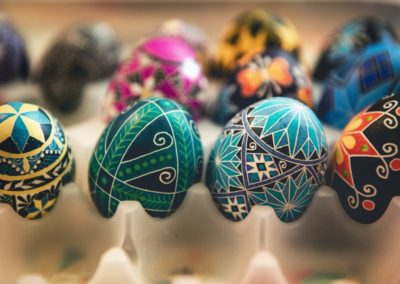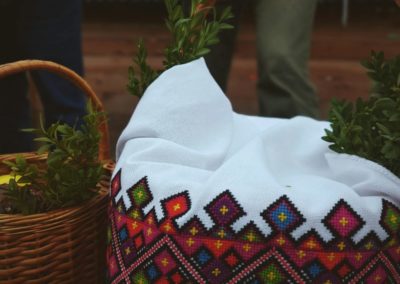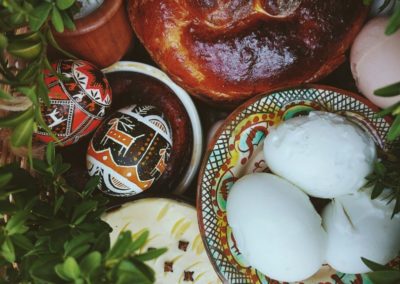In Ukraine, Easter, known as “Velykden” in Ukrainian, is one of the most significant and cherished holidays of the year. Steeped in centuries-old traditions and rich cultural heritage, Ukrainian Easter celebrations are a vibrant tapestry of religious customs, festive gatherings, and culinary delights. Join us as we delve into the colorful world of Ukrainian Easter traditions, exploring the mouthwatering food, refreshing drinks, intricate decorations, and heartfelt customs that make this holiday so special.
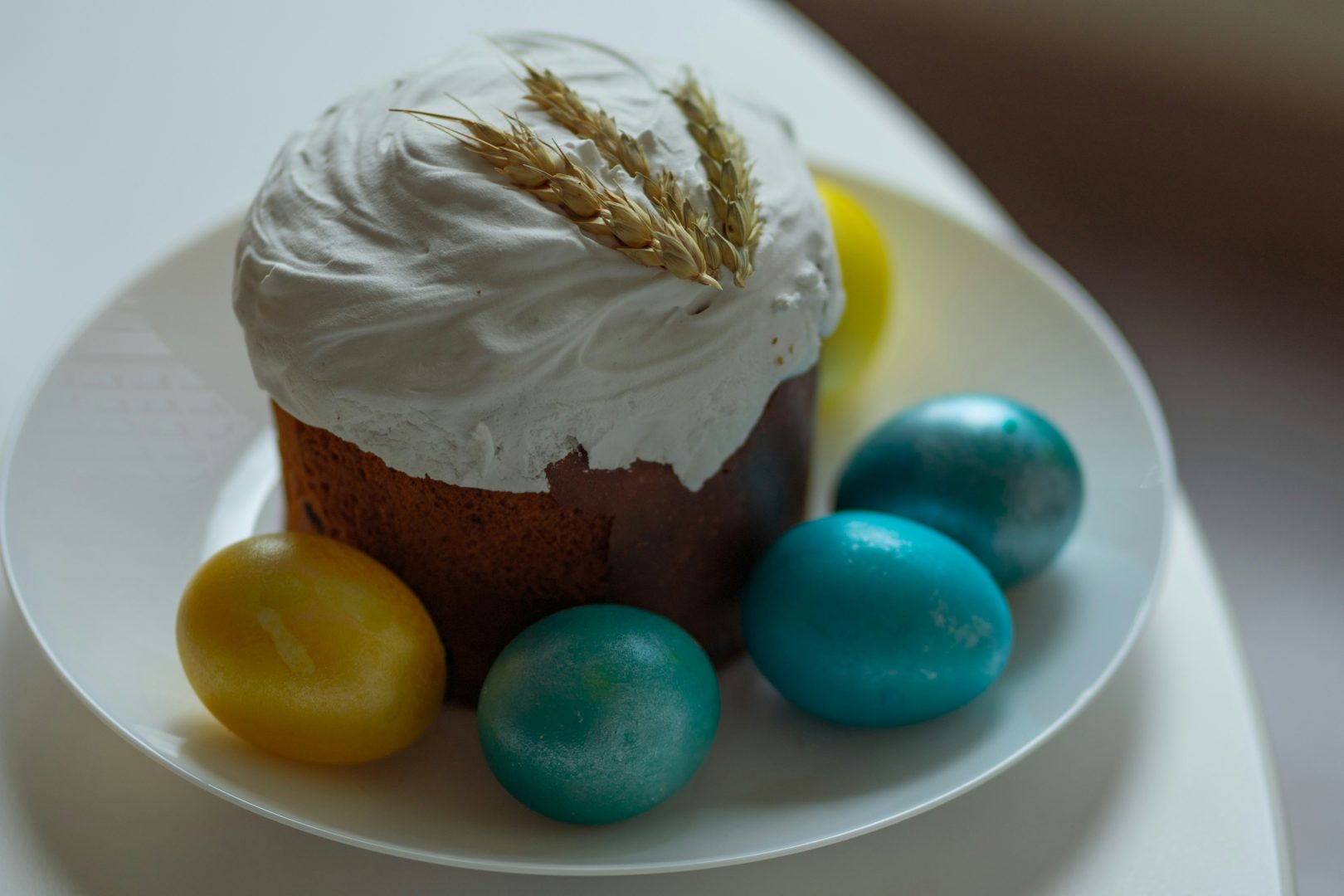
Food: The Heart of Ukrainian Easter
Ukrainian Easter cuisine is a feast for the senses, with a rich array of traditional dishes that have been passed down through generations. One iconic Easter dish is paska, a sweet and rich bread that symbolizes the resurrection of Christ. Baked into elaborate molds and adorned with intricate designs, paska is a centerpiece of the Easter table, often blessed by the priest during the Easter service before being shared among family and friends.
Another beloved Easter treat is pysanky, intricately decorated Easter eggs that are a symbol of new life and rebirth. Made using a traditional wax-resist method, pysanky are meticulously handcrafted with vibrant colors and intricate patterns, each one a unique work of art. These beautiful eggs are often displayed as decorations and exchanged as gifts during the Easter season, bringing joy and beauty to homes and communities across Ukraine.
Ukraine Easter Recipe: Paska
Ingredients:
1 cup milk
1/2 cup unsalted butter
1/2 cup sugar
1 teaspoon salt
2 packages active dry yeast
1/4 cup warm water
4 eggs
4-5 cups all-purpose flour
1/2 cup raisins (optional)
1 egg yolk
1 tablespoon water
Powdered sugar (for dusting)
Instructions:
In a small saucepan, heat the milk until warm. Remove from heat and stir in the butter, sugar, and salt. Let cool to lukewarm. In a small bowl, dissolve the yeast in warm water. Let stand for 5 minutes until frothy. In a large mixing bowl, beat the eggs. Add the milk mixture and yeast mixture, stirring until well combined. Gradually add the flour, 1 cup at a time, until a soft dough forms. Knead the dough on a floured surface for 5-7 minutes until smooth and elastic. If desired, knead in the raisins.
Place the dough in a greased bowl, cover with a clean kitchen towel, and let rise in a warm place for 1-2 hours until doubled in size. Punch down the risen dough and shape it into a round loaf. Place the loaf on a greased baking sheet. Cover the loaf with a clean kitchen towel and let rise for another 30-45 minutes.
Preheat the oven to 350°F (175°C). In a small bowl, beat the egg yolk with water and brush it over the risen loaf. Bake the paska in the preheated oven for 30-35 minutes until golden brown and hollow-sounding when tapped on the bottom. Let the paska cool before dusting with powdered sugar. Slice and serve.
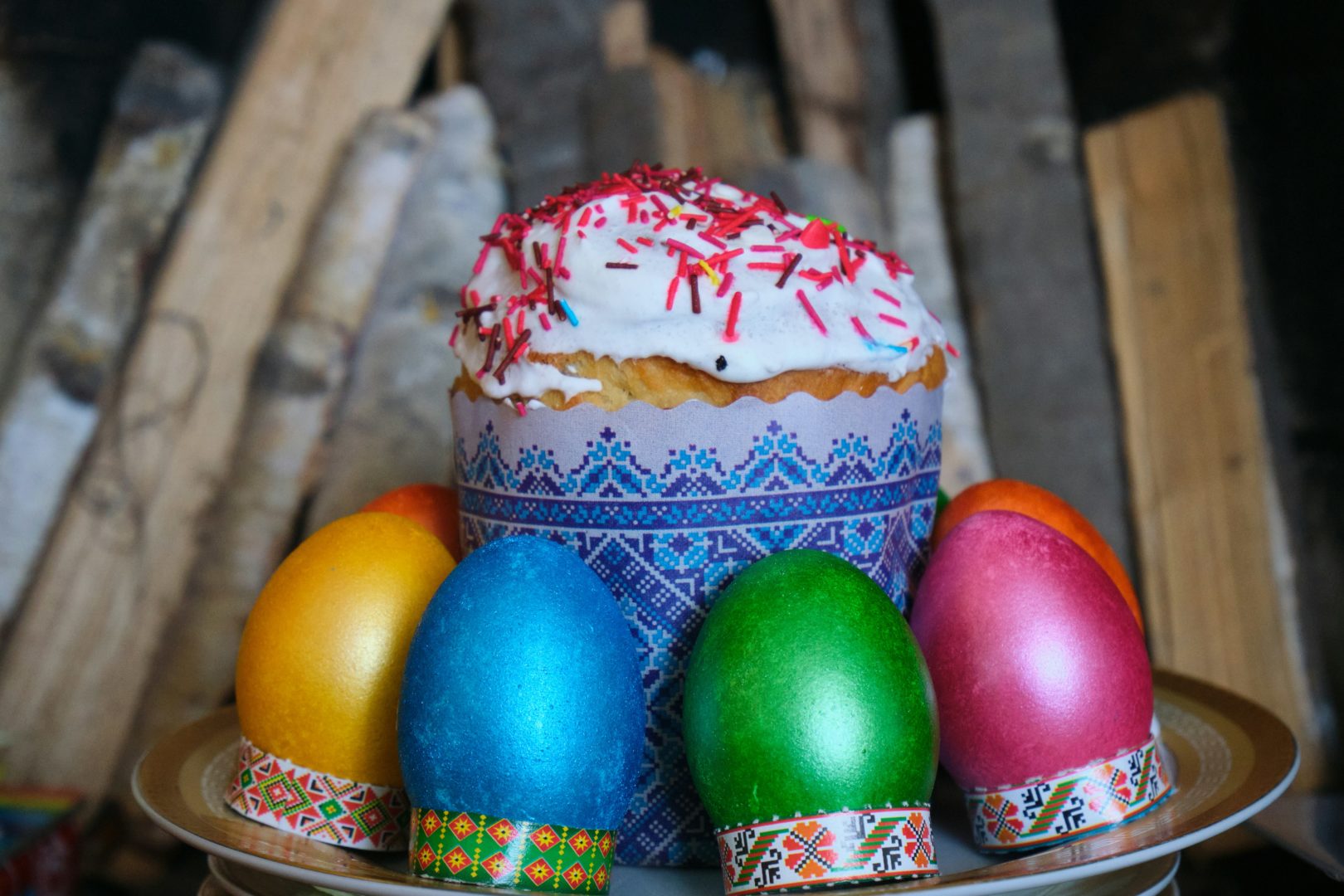
Ukraine Easter Drinks: Toasting to Joy
In Ukraine, Easter is a time for celebration and merriment, often accompanied by traditional drinks that add to the festive atmosphere. One popular Easter beverage is khrust, a homemade drink made from fermented rye bread and flavored with honey, herbs, and spices. Khrust is often served chilled and enjoyed by both adults and children during Easter gatherings and festivities.
For those looking for a non-alcoholic option, kompot is a refreshing fruit punch made from a combination of dried fruits, sugar, and water. Boiled together and then chilled, kompot is bursting with the flavors of apples, pears, cherries, and other seasonal fruits, making it the perfect thirst-quencher on a warm Easter day.

Recipe: Ukrainian Kompot
Ingredients:
1 cup dried fruit (such as apples, pears, cherries, apricots)
1/2 cup sugar (or to taste)
8 cups water
Cinnamon sticks, cloves, or other spices (optional)
Instructions:
Rinse the dried fruit under cold water to remove any dust or debris. Place the fruit in a large pot. Add the sugar and water to the pot, along with any spices you’d like to use. Bring the mixture to a boil over medium heat, then reduce the heat to low and simmer for 20-30 minutes until the fruit is soft and tender. Remove the pot from the heat and let the kompot cool to room temperature. Once cooled, strain the kompot to remove the fruit and spices. Transfer the strained kompot to a pitcher or large jar and refrigerate until chilled. Serve the chilled kompot in glasses over ice, garnished with fresh mint leaves or slices of lemon, if desired.
Decorations: Adding a Touch of Ukrainian Flair
Ukrainian Easter decorations are a reflection of the country’s rich cultural heritage, with vibrant colours, intricate designs, and traditional motifs adorning homes and churches throughout the Easter season. Pysanky are a central element of Ukrainian Easter decorations, displayed proudly as symbols of fertility, protection, and good fortune. These beautifully decorated eggs are often arranged in baskets or hung from branches as part of Easter displays, adding a touch of color and elegance to the surroundings.
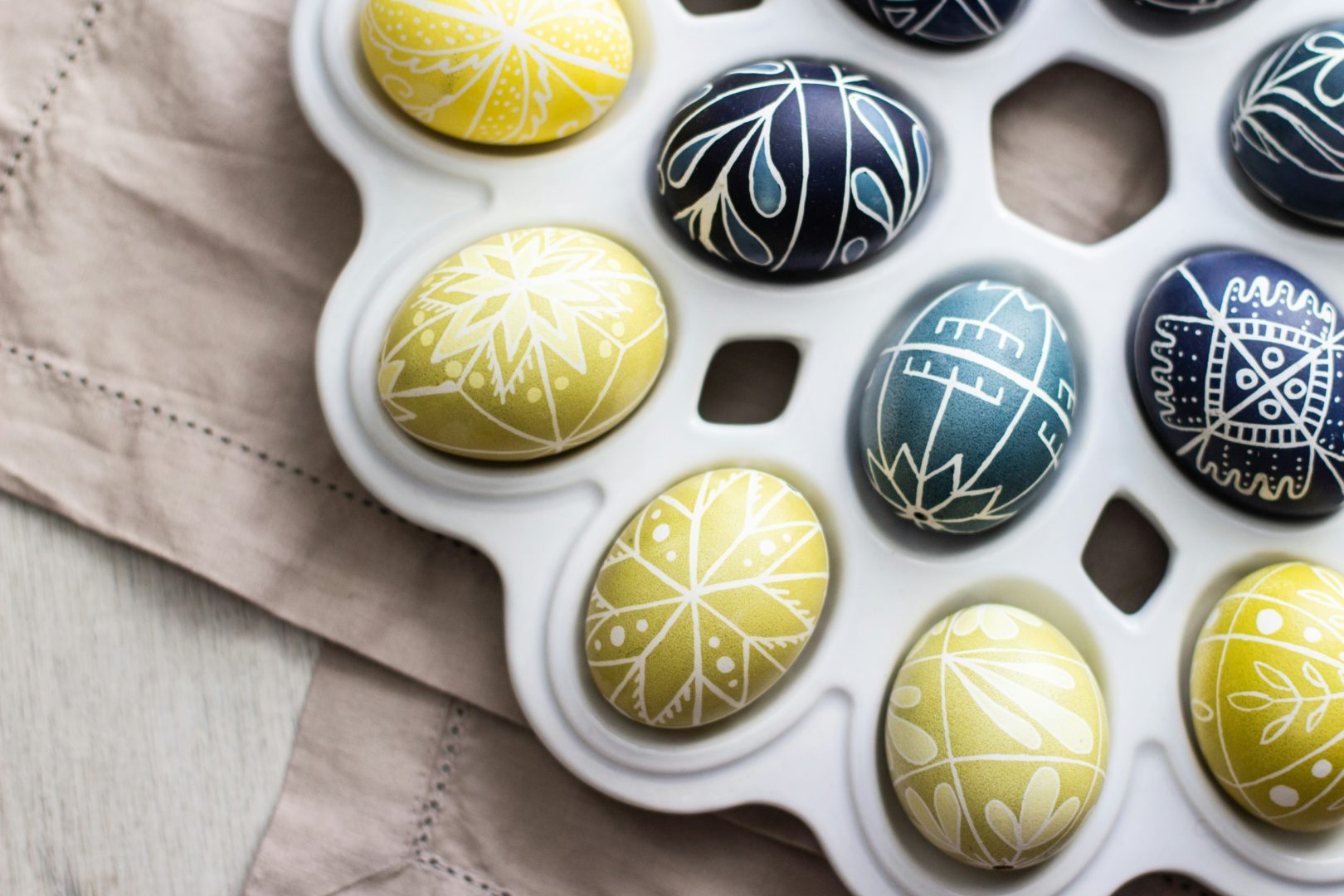
Ukraine Easter Traditions: Keeping the Faith Alive
In Ukraine, Easter is not only a time for festive celebrations but also a deeply religious holiday marked by solemn rituals and heartfelt customs. Midnight Easter services are a cherished tradition, with churches filled with the faithful gathering to celebrate the resurrection of Christ. The service culminates in the lighting of candles and the joyful proclamation of “Khristos voskres!” (Christ is risen!), to which the congregation responds, “Voistynu voskres!” (Indeed, He is risen!).
Another beloved Ukrainian Easter tradition is the Easter egg blessing. Families bring baskets filled with traditional Easter foods to be blessed by the priest. These baskets, known as “paska,” are filled with an array of symbolic foods. These include paska bread, pysanky eggs, meats, cheeses, and sweets. Each representing different aspects of the Easter story and the blessings of the holiday.
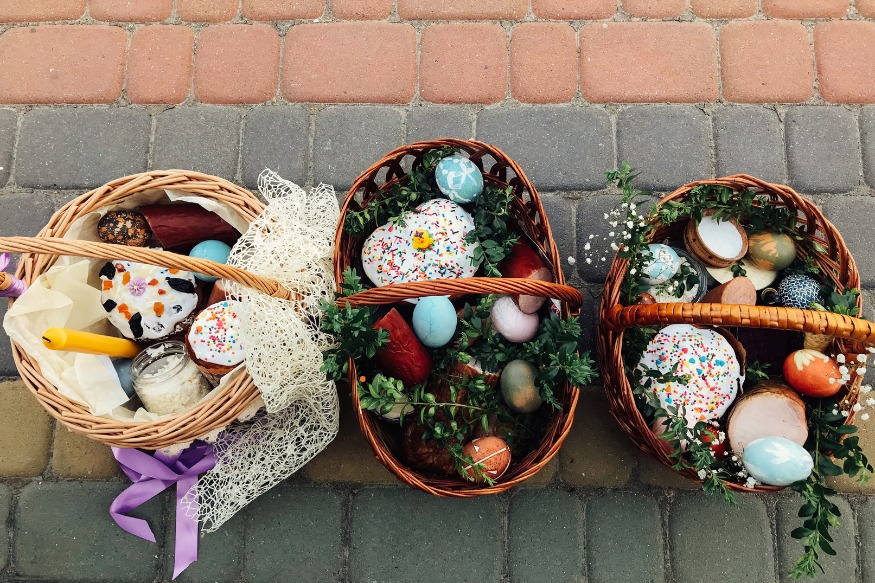
Ukrainian Easter traditions are a beautiful expression of faith, family, and cultural heritage. With a rich tapestry of customs and rituals that have been passed down through generations. Whether savoring traditional dishes like paska and pysanky, raising a toast with khrust or kompot, or participating in cherished traditions like midnight Easter services and egg blessings. Ukrainians come together to celebrate the joy and renewal of Easter in a way that is uniquely their own.

